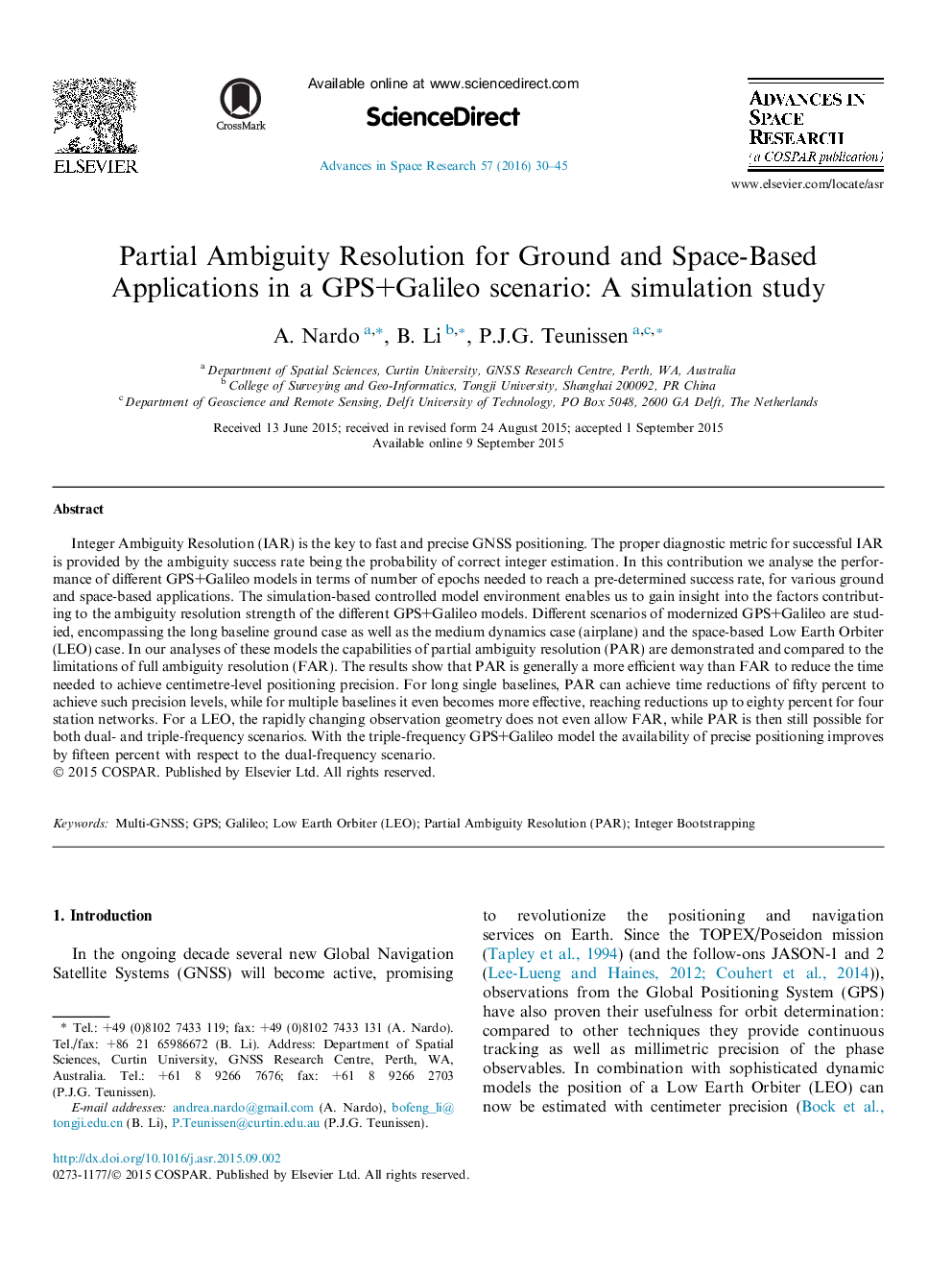| کد مقاله | کد نشریه | سال انتشار | مقاله انگلیسی | نسخه تمام متن |
|---|---|---|---|---|
| 1763935 | 1020031 | 2016 | 16 صفحه PDF | دانلود رایگان |

Integer Ambiguity Resolution (IAR) is the key to fast and precise GNSS positioning. The proper diagnostic metric for successful IAR is provided by the ambiguity success rate being the probability of correct integer estimation. In this contribution we analyse the performance of different GPS+Galileo models in terms of number of epochs needed to reach a pre-determined success rate, for various ground and space-based applications. The simulation-based controlled model environment enables us to gain insight into the factors contributing to the ambiguity resolution strength of the different GPS+Galileo models. Different scenarios of modernized GPS+Galileo are studied, encompassing the long baseline ground case as well as the medium dynamics case (airplane) and the space-based Low Earth Orbiter (LEO) case. In our analyses of these models the capabilities of partial ambiguity resolution (PAR) are demonstrated and compared to the limitations of full ambiguity resolution (FAR). The results show that PAR is generally a more efficient way than FAR to reduce the time needed to achieve centimetre-level positioning precision. For long single baselines, PAR can achieve time reductions of fifty percent to achieve such precision levels, while for multiple baselines it even becomes more effective, reaching reductions up to eighty percent for four station networks. For a LEO, the rapidly changing observation geometry does not even allow FAR, while PAR is then still possible for both dual- and triple-frequency scenarios. With the triple-frequency GPS+Galileo model the availability of precise positioning improves by fifteen percent with respect to the dual-frequency scenario.
Journal: Advances in Space Research - Volume 57, Issue 1, 1 January 2016, Pages 30–45